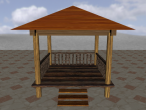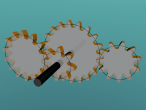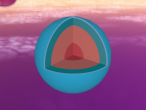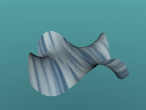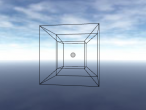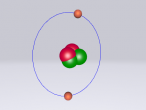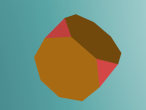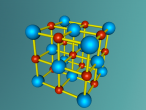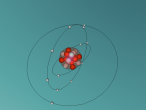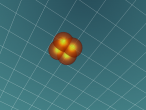Geometry
NaCl Lattice Blog Entry FINAL (Ryan Gray ASC091C)
By Ryan Gray ASC091C
This model is of a salt crystal lattice, with the chemical formula NaCl. Its different properties allow it to have many uses in society, including as a preservative, flavouring and currency. Salt demonstrates ionic bonding and its structure makes it interesting to model, because the crystal lattice can continue on forever and doesn't have a specific number of atoms like water does, with each water molecule consisting of one oxygen and two hydrogen atoms. For the purposes of this project, I limited my model to a 3x3x3 cube so it could be easily seen. The distance between the atoms was also expanded to allow the bonds to be more clearly viewed.
Carbon Dioxide
Carbon dioxide is all around us: the bubbles in soda, dry ice for refrigeration and the gas in some fire extinguishers.
Carbon dioxide has a chemical formula of CO2, was 'discovered' in the 1750's by a Scottish physician Joseph Black and makes up 0.04% of the Earth's atmosphere.
In this blog post I will discuss carbon dioxide; the composition, structure and characteristics as well as its emissions.

2nd DRAFT for MAGNESIUM ATOM
Dear Teachers,
This is our draft of magnesium atom, just to check whther this publishses properly or not (NOT A FINAL). Draft Atomic structure created by Haritha. B and Krupesh. M.
Silicon
Nitrogen Atom Blog Millie Ng FINAL
Introduction
Nitrogen is an atom which is also the first element in column 15 of the periodic table (Johnson, 2012). It is part of the group of "other" nonmetal elements (Johnson, 2012). Although air is largely associated as "oxygen", the most common element in air is nitrogen (Johnson, 2012). The Earth's atmosphere is 78% nitrogen gas. Despite the fact that there is a lot of nitrogen in the air, there is very little in the Earth's crust (Johnson, 2012). It can also be found in rare minerals such as saltpeter and can be found in all living organisms on Earth such as plants and animals (Johnson, 2012).

ATOM MAGNESIUM







